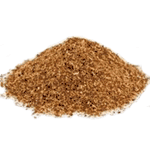(Free Shipping Cannot Be Combined with Other Coupons)

This item may take 7 to 14 days to ship, and your order may be adjusted depending on what is available to ship. Please call 1-888-544-0219 for availability before placing your order. Otherwise we will email you the status once your order is placed.

A tree, 75-80 feet high or a shrub. The deeply fused, dark gray bark is rough. The twigs are reddish brown. Ashy-gray leaves are alternate, lanceolate, serrate and silky on both sides. The male and female flowers occur on separate trees, appearing in catkins on leafy stalks at the same time as the leaves. Found throughout the U.S. in moist places.
Brand: Best Botanicals
White Willow Bark Powder 8 oz.
Accessories
The information on this site is for informational purposes only and is not intended as a substitute for advice from your Doctor, Physician or Other Health Care Professional or any information contained in product labeling. You should consult your Healthcare Professional before starting any diet, supplement or exercise program and before taking any natural medication or if you have or suspect you might have a health issue.








